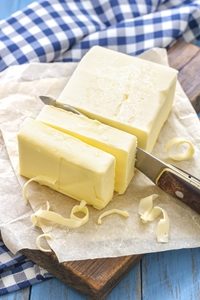
Why use ghee?
Ghee lasts a long time without spoiling. It can be kept either in the refrigerator or out of the refrigerator. The best place to store ghee is in a dry place away from direct sunlight – inside a cupboard works well. Ghee is special because it is a dairy product but doesn’t have casein or lactose in it. This means that people who are sensitive to dairy products will have no problem with ghee or anything cooked in or with ghee. Ghee has been called the healthiest source of edible fat and is supposed to have many health benefits, but should still be used sparingly because it is mostly saturated fat.
Ways to use ghee
Ghee can be used for many different things, and should be experimented with by Boulder culinary arts students – use it with everything from sauces to vegetables and meats. It can also be used in snacks, appetizers and even desserts. When cooking, consider replacing whatever fat or oil you’re using with ghee. Try using ghee to fry dessert pastries, sautée squash and zucchini, or rub it on the surface of meat before you sear it. It is a very versatile fat that can be used in sautée pans, sauce pans or fryers. It can even be used for a variety of things outside of cooking. The recipes that use ghee vary widely and many times ghee can be used even if a recipe doesn’t call for it.



